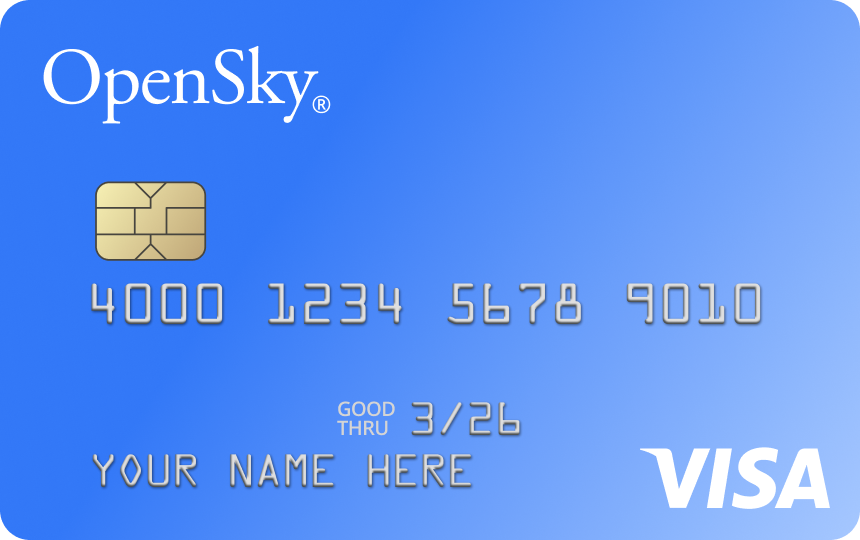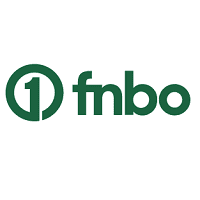
It’s never too early to start learning smart strategies for managing one’s money. Most teens don’t get a formal education in topics like budgeting, investing, and choosing the right financial institution for their money, which is a missed opportunity.
That’s why it can be especially important for young people to take steps to build their own financial insights and skills. That can mean understanding the right amount to save and spend when earning a salary; what the challenges of managing credit can be; and how to invest money wisely.
This guide covers these aspects of financial literacy and more. Consider it a smart starting point as you build your money knowledge and know-how. Whether you’re thinking about buying your first car, affording college, or starting your own business someday, you’ll learn some of the key steps to bring your financial life into focus.
Why Is Financial Literacy Important for Teens?
Sad but true: Most people are launched into adulthood without being educated on personal finance. What’s more, in many households, money isn’t a topic that’s freely discussed, so kids don’t grow up hearing about how much their parents earn, spend, or save.
These are factors that can make it a challenge to gain financial knowledge and money management skills. However, learning about how to budget, save, invest, and spend wisely when young can set you up on the path to achieve your short- and long-term goals. That’s why you’ll learn some financial tips for teenagers right here.
The sooner you understand your way around money, the earlier you can get on the path to, say, travel around Europe for a summer, manage student loan debt, or even start saving for your dream house.
💡 Quick Tip: Typically, checking accounts don’t earn interest. However, some accounts do, and online banks are more likely than brick-and-mortar banks to offer you the best rates.
5 Key Financial Tips for Teens
Making the most of your money as you start on the path to your independent life doesn’t need to be complicated. Here are five important financial literacy concepts for teens.
1. Opening a Bank Account
Financial planning for teens often starts with having a bank account. Not only will a bank account make it easier to cash those birthday checks from Grandma, it also provides a place to monitor money and start saving.
Most bank accounts billed as “teen accounts” are really just joint bank accounts, because teenagers under 18 typically need a parent or guardian to also be an account holder. This makes it possible to open a bank account for a minor.
Although it’s sometimes easier for teens to open an account at the same place their parents bank, it may be worth researching which banks in the area have the best benefits for teenagers specifically. Some points to know:
• The age for opening up an account varies from bank to bank, so make sure to check specifications on the bank’s website beforehand.
• Valid identification like a student ID, driver’s license, passport, birth certificate, and/or social security card is also required for account owners when opening a teen checking account.
• In some cases, a parent or guardian must be present to open the account, but some banks do offer the opportunity to open an account online. This will often require uploading the same documents to prove your identity.
• Some banks also offer parental controls, setting withdrawal and debit card limits, or even text alerts about account activity. Before opening an account, it may be worth considering what is most important and beneficial — definitely talk it over with a parent or legal guardian.
• Learning about any fees or minimum balances from the bank is also important step in personal finance for teens. Make sure to ask the right questions in person or check out the bank’s fee structure on their website. Ideally, you might want an account with no fees and the ability to earn a bit of interest (many checking accounts pay no interest). You are typically more likely to find such offers at online vs. traditional banks.
• Having a bank account means access to making deposits and withdrawals, plus online banking tools that can help with money management.
A word about debit cards: A teen checking account typically offers access to a debit card, which allows account holders to take out cash from ATMs and use the card for purchases in stores or online.
And since a debit card takes money directly out of the checking account for payments, it may help to download the bank’s mobile app, if available. This can help with checking account balances and, at some banks, setting up alerts if the account falls below a certain balance.
A bank account is a great first step in learning money management, whether it’s using a debit card, checking balances, transferring money, or setting up a direct deposit for paychecks. Especially with a new job, a weekly or bi-weekly paycheck comes with learning more financial responsibility. With a personal bank account, teens can pick up crucial financial skills before turning 18.
And, at many banks, once someone does turn 18, the account can turn into a standard checking account, which they can either choose to keep or leave for a new banking institution. (Important note: There may be new fees, so it’s important to keep an eye on what those might be.)
Recommended: What Is a Student Checking Account?
2. Budgeting For Teens
Another financial tip for teenagers involves learning how to balance income and expenses. Making a simple budget can help keep things on track. Whether it’s keeping tabs on a monthly allowance or income from a part-time job, knowing how much money is spent versus how much money gets made is a key part of money management. Plus, a budget can show how much money is available to save every month.
Many banks with mobile or online banking offer simple budgeting tools, such as categorizing money into simple buckets like “spendable” or “set aside.” One pretty practical budget suggestion is the 50/30/20 method. This helps to simplify spending categories: rather than trying to decipher every transaction and having hundreds of small budgets for individual items, the 50/30/20 method just divides monthly income into thirds.
• 50% of income would be put toward necessities, such as bills and other regular spending that’s hard to do without. For teens, this might mean car-related expenses, like insurance and gas, or a monthly cellphone bill. If 50% seems like a lot — especially if parents are still paying for big expenses like groceries and housing — consider putting an extra 10% into savings or other financial goals for now.
• 30% would be allocated for day-to-day spending, like going out to eat with friends, entertainment, shopping, and other fun activities.
• The remaining 20% would be allocated for financial goals, usually savings or debt payoff. Maybe this can be the start of a college fund, or saving up for a big purchase in the future?
3. Smart Savings
In tandem with having a budget, learning how to save money is an important part of financial planning. Opening both a checking and savings account may make it simpler to put money away.
Since a debit card is only tied to a checking account, that’s like an added buffer from the money in a savings account. Plus, learning to regularly transfer money into a savings account can help create healthy money habits.
When you have a regular paycheck, one of the simplest ways to save more is to set up direct deposit to divide the funds between a checking and savings account. If 20% automatically goes directly into savings, it requires little extra thought each pay period.
Automating your savings in this way takes away the need to manually transfer money. This can help eliminate any mental gymnastics surrounding the desire to spend money in your checking account immediately — it’s like it was never there in the first place.
Plus, in an emergency, a connected savings account can help prevent overdraft fees. If college is in the plans, saving now could mean taking out fewer loans in the future.
In fact, this thinking can be applied to any money goal, whether it’s a new phone, car, or a big post-graduation trip. Saving now can make it easier to achieve later.
💡 Quick Tip: Most savings accounts only earn a fraction of a percentage in interest. Not at SoFi. Our high-yield savings account can help you make meaningful progress towards your financial goals.
4. Being Cautious With Credit
Financial tips for teens are full of dire warnings about the perils of credit cards. But learning early on how credit cards work and how to manage credit is also part of mastering money management. Building credit now may open more doors in the long run.
For example, establishing a positive credit history can help make it more likely to successfully secure a loan for a car or rent an apartment down the road.
One way for teens to start is to get added as an authorized user on a parent’s credit card. The authorized user gets the benefits of the credit card and building credit history without the responsibility of being the primary cardholder and making payments.
However, since late payments may impact both credit scores, teens can also set up an arrangement to pay off any debt incurred using the card each month.
In fact, it’s getting harder for people under the age of 21 to get a credit card, because federal law under the Credit CARD Act of 2009 requires credit card issuers to verify that the applicant has the following before a credit card is issued:
• A cosigner’s signature. The cosigner can be a parent, guardian, etc. as long as they are able to pay the applicant’s debt from the card.
• Official financial information proving that the applicant can repay the debt on their own.
The submitted application must be written. And if a person under 21 is approved for a card, they can’t get a credit limit increase without written approval from the cosigner.
Eventually opening an individual credit card without a cosigner, of course, means a lot more financial responsibility. Paying a credit card in full each month, as opposed to carrying a balance, is an important financial habit to get the hang of, as paying in full each billing cycle means the cardholder won’t pay interest on a balance and it can help build credit score.
Until then, an authorized user receives a separate credit card in his or her name, but there may be no need to even use the card. Just having it issued can help build credit if the main cardholder is keeping up with their payments. As credit builds, it’s smart to monitor credit reports and scores for errors or fraud. It might be a good idea to start monitoring credit through a free site like FreeCreditReport.com .
5. Setting Up a Side Hustle
If a part-time job or summer gig isn’t an option just yet, whether due to age, school work, or other restrictions, there are other options for earning extra cash. One of the benefits of a side hustle is being able to bring in income. And any income, however small, could help build good personal finance habits like budgeting and saving.
For ideas, look to needs in the community, such as assisting older adults with technology, babysitting, tutoring, or lawn care. Helping on a moving day, walking dogs, or washing cars are also great ways to step up from a beginner’s lemonade stand.
You might also consider your hobbies: Do you paint landscapes in your free time? Make jewelry? You could possibly sell your work to bring in some cash.
For those nearing college and looking for a part-time or entry-level job, it may be worth considering a company that offers tuition support or reimbursement for their employees.
Building smart financial planning skills now may make it even easier down the road when starting a full-time job — with budgeting and saving.
Can You Invest as a Teenager?
Many teenagers are curious about investing and how they might build wealth that way. Here are a few things to know if you’re wondering how to invest as a teenager:
• If you are under age 18, you cannot be the sole owner of a standard brokerage account.
• With adult supervision, you may open what is known as a custodial account. This means that the adult oversees the account while you are under 18. When you turn 18, you can likely take over control of the account with the adult’s approval.
By collaborating with an adult in this way on investments, you can learn the basics and begin to experiment. The conventional wisdom is that, the younger you are, the more risk you can afford to take with investing, since you have time to recoup any losses and ride out the ups and downs of the market.
Just do keep in mind that investment does have inherent risk, as your portfolio isn’t insured the same way money in the bank is.
Once You Are Old Enough to Invest, Where Do You Start?
If you are old enough, here’s how to invest as a teenager. Keep these tips in mind:
• Do your research. There is plenty of information about investing available online, via apps and classes, in books, on podcasts, and beyond. Find reputable resources and educate yourself on how to invest money as a teen. This can include both principles of investing as well as different kinds of investments to consider.
• Set goals. When you begin investing, it’s wise to figure out your goals, and you may indeed have more than one. Perhaps you want to invest in the short-term to help generate money to pay back student loans. And maybe you also want to begin saving to start a business when you are 35. Those different goals and timeframes can influence how you invest.
• Opening a brokerage account. Once you are old enough, you will have a choice about the sort of account you open and how it is managed. Whether you want to work with a financial professional or try robo advising, spend time understanding the pros and cons of your options.
When you make a decision, you’ll be ready to invest money as a teenager, but it doesn’t have to be set in stone. You can shift gears and try other methods as well.
Making Smart Money Moves With SoFi as a Teen
While SoFi doesn’t offer bank accounts for minors, take a look at what we offer for when you are of legal age to open an account. Or, if you are age 15 or older, see if you might be added as an authorized user to an adult’s account.
Interested in opening an online bank account? When you sign up for a SoFi Checking and Savings account with direct deposit, you’ll get a competitive annual percentage yield (APY), pay zero account fees, and enjoy an array of rewards, such as access to the Allpoint Network of 55,000+ fee-free ATMs globally. Qualifying accounts can even access their paycheck up to two days early.
Better banking is here with up to 4.50% APY on SoFi Checking and Savings.
FAQ
What should high school students know about financial literacy?
It is important for high school students to learn about opening bank accounts, budgeting, saving, managing credit wisely, and bringing in income.
How can a 16-year-old invest money?
A 16-year-old typically cannot open their own brokerage account. However, they can open a custodial account with a trusted adult.
How would you invest $1,000 as a teenager?
A teenager typically cannot invest money on their own; they would have to open a custodial account with a trusted adult. Then, they would have to identify a goal for the funds (to generate income ASAP? To grow slowly for use later in life?) and select the right kind of investments.
SoFi® Checking and Savings is offered through SoFi Bank, N.A. ©2023 SoFi Bank, N.A. All rights reserved. Member FDIC. Equal Housing Lender.
The SoFi Bank Debit Mastercard® is issued by SoFi Bank, N.A., pursuant to license by Mastercard International Incorporated and can be used everywhere Mastercard is accepted. Mastercard is a registered trademark, and the circles design is a trademark of Mastercard International Incorporated.
SoFi members with direct deposit activity can earn 4.50% annual percentage yield (APY) on savings balances (including Vaults) and 0.50% APY on checking balances. Direct Deposit means a deposit to an account holder’s SoFi Checking or Savings account, including payroll, pension, or government payments (e.g., Social Security), made by the account holder’s employer, payroll or benefits provider or government agency (“Direct Deposit”) via the Automated Clearing House (“ACH”) Network during a 30-day Evaluation Period (as defined below). Deposits that are not from an employer or government agency, including but not limited to check deposits, peer-to-peer transfers (e.g., transfers from PayPal, Venmo, etc.), merchant transactions (e.g., transactions from PayPal, Stripe, Square, etc.), and bank ACH funds transfers and wire transfers from external accounts, do not constitute Direct Deposit activity. There is no minimum Direct Deposit amount required to qualify for the stated interest rate.
SoFi members with Qualifying Deposits can earn 4.50% APY on savings balances (including Vaults) and 0.50% APY on checking balances. Qualifying Deposits means one or more deposits that, in the aggregate, are equal to or greater than $5,000 to an account holder’s SoFi Checking and Savings account (“Qualifying Deposits”) during a 30-day Evaluation Period (as defined below). Qualifying Deposits only include those deposits from the following eligible sources: (i) ACH transfers, (ii) inbound wire transfers, (iii) peer-to-peer transfers (i.e., external transfers from PayPal, Venmo, etc. and internal peer-to-peer transfers from a SoFi account belonging to another account holder), (iv) check deposits, (v) instant funding to your SoFi Bank Debit Card, (vi) push payments to your SoFi Bank Debit Card, and (vii) cash deposits. Qualifying Deposits do not include: (i) transfers between an account holder’s Checking account, Savings account, and/or Vaults; (ii) interest payments; (iii) bonuses issued by SoFi Bank or its affiliates; or (iv) credits, reversals, and refunds from SoFi Bank, N.A. (“SoFi Bank”) or from a merchant.
SoFi Bank shall, in its sole discretion, assess each account holder’s Direct Deposit activity and Qualifying Deposits throughout each 30-Day Evaluation Period to determine the applicability of rates and may request additional documentation for verification of eligibility. The 30-Day Evaluation Period refers to the “Start Date” and “End Date” set forth on the APY Details page of your account, which comprises a period of 30 calendar days (the “30-Day Evaluation Period”). You can access the APY Details page at any time by logging into your SoFi account on the SoFi mobile app or SoFi website and selecting either (i) Banking > Savings > Current APY or (ii) Banking > Checking > Current APY. Upon receiving a Direct Deposit or $5,000 in Qualifying Deposits to your account, you will begin earning 4.50% APY on savings balances (including Vaults) and 0.50% on checking balances on or before the following calendar day. You will continue to earn these APYs for (i) the remainder of the current 30-Day Evaluation Period and through the end of the subsequent 30-Day Evaluation Period and (ii) any following 30-day Evaluation Periods during which SoFi Bank determines you to have Direct Deposit activity or $5,000 in Qualifying Deposits without interruption.
SoFi Bank reserves the right to grant a grace period to account holders following a change in Direct Deposit activity or Qualifying Deposits activity before adjusting rates. If SoFi Bank grants you a grace period, the dates for such grace period will be reflected on the APY Details page of your account. If SoFi Bank determines that you did not have Direct Deposit activity or $5,000 in Qualifying Deposits during the current 30-day Evaluation Period and, if applicable, the grace period, then you will begin earning the rates earned by account holders without either Direct Deposit or Qualifying Deposits until you have Direct Deposit activity or $5,000 in Qualifying Deposits in a subsequent 30-Day Evaluation Period. For the avoidance of doubt, an account holder with both Direct Deposit activity and Qualifying Deposits will earn the rates earned by account holders with Direct Deposit.
Members without either Direct Deposit activity or Qualifying Deposits, as determined by SoFi Bank, during a 30-Day Evaluation Period and, if applicable, the grace period, will earn 1.20% APY on savings balances (including Vaults) and 0.50% APY on checking balances.
Interest rates are variable and subject to change at any time. These rates are current as of 8/9/2023. There is no minimum balance requirement. Additional information can be found at http://www.sofi.com/legal/banking-rate-sheet..
Financial Tips & Strategies: The tips provided on this website are of a general nature and do not take into account your specific objectives, financial situation, and needs. You should always consider their appropriateness given your own circumstances.
External Websites: The information and analysis provided through hyperlinks to third-party websites, while believed to be accurate, cannot be guaranteed by SoFi. Links are provided for informational purposes and should not be viewed as an endorsement.
Disclaimer: Many factors affect your credit scores and the interest rates you may receive. SoFi is not a Credit Repair Organization as defined under federal or state law, including the Credit Repair Organizations Act. SoFi does not provide “credit repair” services or advice or assistance regarding “rebuilding” or “improving” your credit record, credit history, or credit rating. For details, see the FTC’s website .
SOBK0923006
Source: sofi.com









